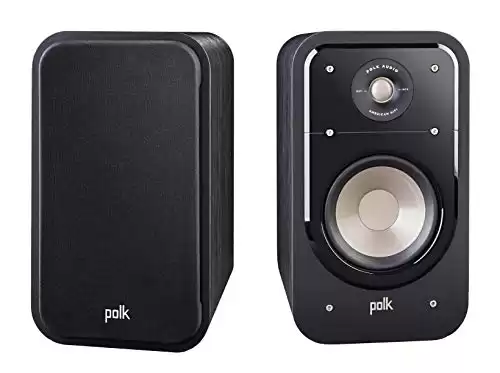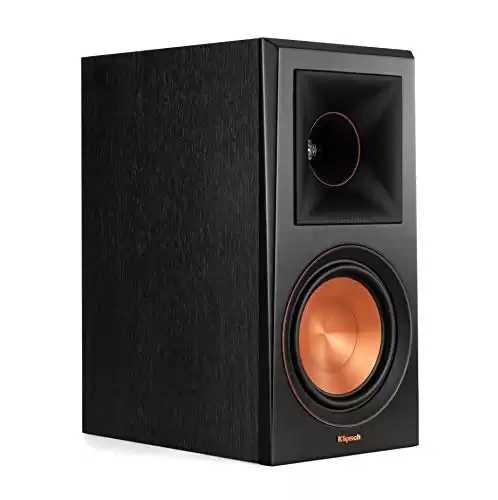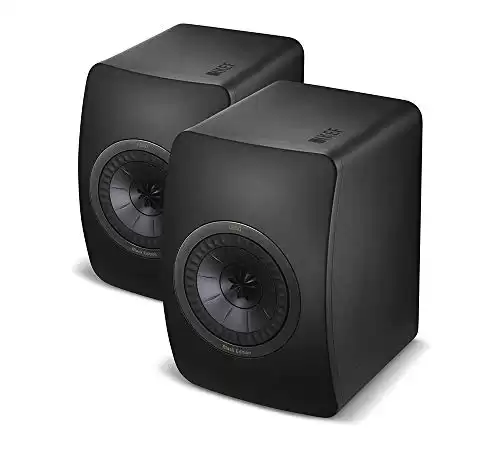You can connect two speakers to one amplifier to achieve specific results.
You won’t need to use volume controls or individual switching when set up correctly, helping multiple ceiling speakers, large backyards, or any other situation when a standard setup isn’t enough.
When you connect two speakers to a single amp, you don’t need to turn each one-off or on individually.
The volume controls are no longer separated for both speakers with this setup. It’s an effective way to expand your audio resources for entertainment systems, home theaters, and similar products.
How to Connect Two Speakers to One Amplifier
You can connect two speakers to one amplifier through the parallel or series approaches, based on your equipment’s impedance. If your speakers require more ohms than the amplifier, the parallel option is necessary. If they are less than the total specified load, the series option is the best choice.
It is crucial to remember that this is not a stereo amplifier in this scenario. That option would have two connections to use already, allowing you to wire the individual speakers to each one.
This guide involves connecting two speakers to each amplifier.
The goal is to match the output impedance of the amplifier with those of the speakers.
You can also choose to have the speakers with a lower impedance rating than the amp. When you can achieve this result, you can use the speakers successfully.
How to Connect Two Speakers to a Single Channel
When you connect your speakers to an amp in the series installation, you must add the impedances together. If you have two 8-ohm devices to use, that means you’ll have 16 ohms to manage.
If your amp supports a 16-ohm setup, the series connection option works the best because you’ve created a match.
When your amp only supports 8 ohms (or 12 ohms), you’d need the parallel connection choice instead.
Here are the steps to follow for both situations.
■ Connecting Speakers with the Series Method
- Plug the negative terminal of the amplifier into the same terminal on your first speaker.
- Connect the positive terminal of the first speaker to the negative terminal on the second one.
- Plug the positive terminal of the second speaker to the positive amp on your amp.
Once you’ve finished these steps, test the setup to ensure you have stable terminal connections. If you hear crackling sounds, static, or hollow audio, you might have a loose wire to manage.
Your speakers will not be as loud with this connection method.
■ Connecting Speakers with the Parallel Method
- Plug the negative terminal on the amplifier to the same connection point on your first speaker.
- Hook the negative input of the first speaker to the second one. That means you will have two cords coming out of the first speaker’s negative terminal.
- Plug the positive terminal of the positive amplifier to the positive terminal of the first speaker.
- Hook the positive of the first speaker to the positive on the second speaker. You’ll have two wires coming out of the first speaker’s positive terminal
The same situation applies to the parallel method as with the series process. If you don’t have the expected audio quality from your setup, return to each terminal to ensure your wiring is secure.
■ Is It Bad to Connect Multiple Speakers to a Single Output?
Multiple speakers can connect to a single output without difficulty if you keep the math correct on your ohms.
If your speakers have a higher impedance than your amplifier, you could blow out the system. That’s why the goal is to match them or be lower than the amp.
When you purchase an entertainment system with audio connections, the manufacturer typically shows you what setups are possible. You’d want to follow those guidelines accurately to avoid inadvertent damage.
If you have independent speakers going to an amp from a different manufacturer, the ohms rules still apply.
Most manufacturers do not recommend wiring speakers in series because the sound quality can dip dramatically.
Best Speakers to Use for Series or Parallel Connections
The quality of the speakers you use for your connections to an amplifier dictates how good the eventual sound will be.
That’s why it is crucial to select premium designs whenever possible for this system setup.
Although you can connect via series or parallel with virtually any speaker except Bluetooth-only models, the sound quality changes are enough to be bothersome to the average listener.
1. Jama Studio 8
These speakers are the perfect addition to any home. They provide a seamless audio result with minimal effort and modern style.
It is clean, compact, and ideal for any décor or style. Woodgrain accents around the tweeters work with the base and feet to give each speaker a handcrafted look.
Trim rings cover the fasteners on the Jama Studio 8 speakers, providing a clean and elegant experience.
The grilles are entirely magnet, which eliminates push pins and mounting holes for a beautiful front baffle.
These speakers are Dolby Atmos compatibly, delivering high-quality sound that surrounds the room with incredible depth and clarity.
| FREQUENCY RESPONSE | 57 Hz to 26 kHz |
| SENSITIVITY | 87 dB (2.83v @ 1m) |
| POWER HANDLING | 80W / 160 W |
| IMPEDANCE | 8 Ohm |
| WARRANTY | 5 Years |
2. Polk Audio Signature Series Speakers
Choose this speaker package when you want a dynamic sound delivered in a small box. The looks are bold with this design, using iconic rounded corners to create clean audio.
The power port technology is a patented way to deliver massive bass without causing distortion, ensuring that even a series setup works nicely when paired with your amp.
You’ll find full compatibility waiting for you with the Dolby Surround Sound, ranging from 2.0 to 9.1 with the setup.
Whether you want to create a home theater or a fun outdoor recreational area, the results are profound with this heart-thumping sound.
A soundbar comes with the package for a simple TV setup with the Polk Audio Signature Series speakers.
You’ll get the highest resolution while fitting the speakers into the smallest spaces with the slim profile.
You’re going to enjoy every moment you get to listen to these signature speakers.
| FREQUENCY RESPONSE | 42 Hz to 40 kHz |
| SENSITIVITY | 89 dB (1W @ 1m) |
| POWER HANDLING | 20 – 125 Watts/Channel |
| IMPEDANCE | 4 Ohm |
| WARRANTY | 5 Years |
3. Klipsch RP-600M Bookshelf Speakers
With the one-inch titanium vented tweeter and its 6.5-inch spun copper ceramic-metallic woofers.
The audio quality from these speakers is impressive. It features a flexible and removable magnetic grill, dual binding posts for bi-wire and bi-amp installation, and a rear-firing port for a lovely bass.
When you have the Klipsch RP-600M speakers firing on all cylinders at home, it won’t matter what installation option you chose. You’re going to have crystal-clear sounds that make you feel like the action you’re hearing is real.
The cabinet comes with a scratch-resistant design to offer a sleeker aesthetic to match any home’s décor.
You’ll experience less distortion, a better performance, and a lightweight product coming your way. It has the highest efficiency rating in its class.
It’s an excellent choice if you want something dynamic and affordable to use at home.
| FREQUENCY RESPONSE | 57 Hz to 26 kHz |
| SENSITIVITY | 96 dB (2.83v @ 1m) |
| POWER HANDLING | 100W / 400W |
| IMPEDANCE | 8 Ohm |
| WARRANTY | 3 Years (1 Year Electronics) |
4. KEF LS50 Mini Monitor
If you don’t have much space at home for your speaker setup, you’ll want to choose this high-quality pair for your parallel or series wiring needs.
It delivers an impressive sweet spot with a clean and expansive sound.
The secret to this speaker’s success is the Uni-Q driver array, pushing the soundwaves to you accurately and rapidly.
From the port design to the baffle shaping, everything works to produce unaltered audio to enjoy.
When you choose the KEF LS50, you can select from three different finishes to find the right frequency response to your needs.
With the binding post design equipped with these speakers, you can do pin connectors, spades, banana plugs, or bare wire for your setup.
You won’t believe the sounds that come out when you start listening for the first time!
| FREQUENCY RESPONSE | 47 Hz to 45 kHz |
| SENSITIVITY | 85 dB (2.83v @ 1m) |
| POWER HANDLING | 25W / 100W |
| IMPEDANCE | 8 Ohm |
| WARRANTY | 5 Years (1 Year Electronics) |
5. ELAC Debut 2.0 Speakers
Although these speakers don’t carry the same brand-name recognition as others in the industry, you’ll benefit from a lower price.
Its compatibility is almost universal, offering another advantage to consider. You also get a lower ohm rating, opening up more amps for potential use.
The ELAC Debut 2.0 features front-firing ports to give you more placement flexibility. It uses a thick MDF cabinet with internal bracing incorporation to reduce unwanted vibrations.
You’ll notice the extended highs immediately, with the impactful bass following right behind.
Sounds can sometimes be a little bright, but you’ll find them to be incredibly detailed for the investment.
If your room is small, the speakers might be overwhelming at their full setting, but overall, it’s an excellent speaker that comes at a mid-range price.
| FREQUENCY RESPONSE | 46 Hz to 35 kHz |
| SENSITIVITY | 86 dB (2.83v @ 1m) |
| POWER HANDLING | 200W / 400W |
| IMPEDANCE | 6 Ohm |
| WARRANTY | 1 Year |
A Final Thought on Connecting Two Speakers to a Single Amp
You have a couple of options available to connect two speakers to a single amp. Choosing the parallel or series process depends on the impedance of your equipment.
When each speaker has an impedance with an 8-ohm rating or higher, the best practice is to connect them in parallel to reduce the amp’s load.
If each speaker has an impedance below an 8-ohm rating, it is better to wire them in series instead.
The advantage you receive from this process involves simplified controls. It also means you lose the option to adjust each speaker individually.
Both options work well when you can identify the ohm rating in your equipment specifications. If you cannot locate this information, it is better to assume the higher impedance to avoid unintended damage.






